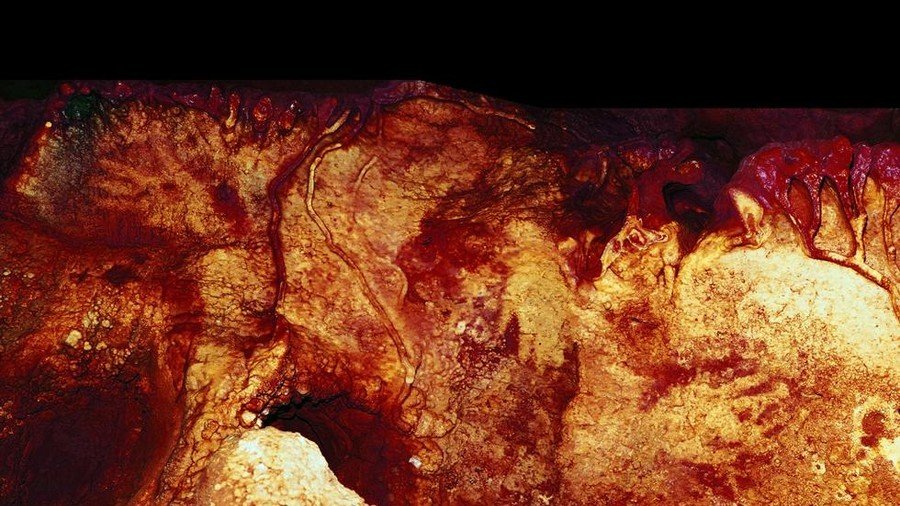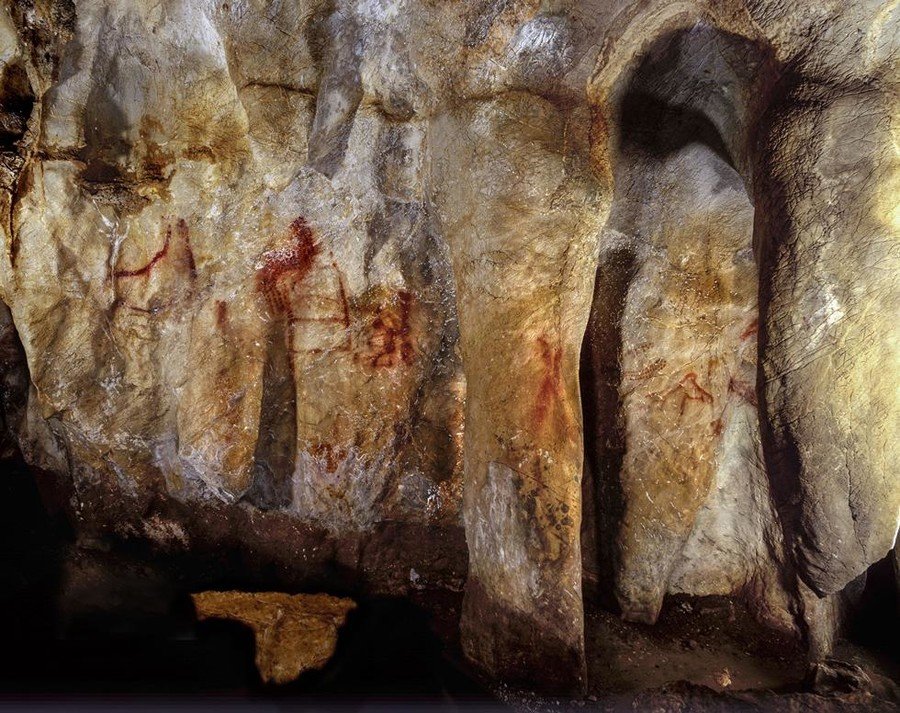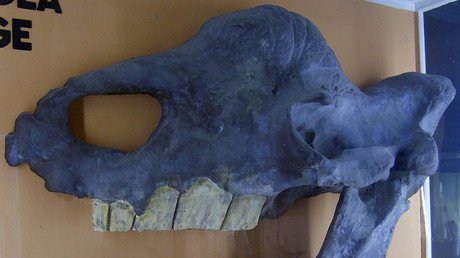Earth’s first artists? Oldest known cave paintings created by ‘sophisticated’ Neanderthals (VIDEO)

More sophisticated and closer to modern humans than previously thought, Neanderthals were the world’s first artists, according to new research which has uncovered cave art in Spain thought to be some 65,000 years old.
The incredible discovery calls into question previous assumptions about the archaic humans and suggests they may have had an artistic sense similar to our own. Neanderthals have long been dismissed as inferior to humans and it was originally proposed they should be called Homo stupidus – the stupid human.
However, a new study, led by the University of Southampton and the Max Planck Institute for Evolutionary Anthropology, shows they are more human-like than previously thought. The team of international archaeologists found three caves in different parts of Spain with paintings created more than 64,000 years ago – 20,000 years before modern humans arrived in Europe.
This means that the paintings must have been created by Neanderthals - Europe’s sole known humanoid inhabitants at the time.“This is an incredibly exciting discovery which suggests Neanderthals were much more sophisticated than is popularly believed,” Dr Chris Standish, study co-author and archaeologist at the University of Southampton, said. Until now, cave art has been attributed entirely to Homo Sapiens.
The team are clear that the paintings are symbolic representations and not just the smearing of pigments on a wall. Among the depictions is one of an unidentified animal inside a rectangle shape. “Nobody really knows what this means but it's certainly done by humans who came into the cave and painted the walls,” study co-author, Dr Dirk Hoffmann, of the Max Planck Institute for Evolutionary Anthropology, said.
All three caves contain red or black paintings of groups of animals, dots and geometric signs, as well as hand stencils, hand prints and engravings. “The fact that we have this from three caves in the north, center and south of Spain, older than 65,000 [years] shows us that this was a deliberate part of their symbolical cultural repertoire.They are making deliberate decisions as to where to place these and of course it's in the depth of caves where they have to be for what seems a ritual purpose,” study co-author, Professor Paul Pettit, of Durham University, said.
“Neanderthals created meaningful symbols in meaningful places. The art is not a one-off accident,” he added, suggesting it is possible there is similar cave art of Neanderthal origin in other parts of Western Europe.

The archaeologists used a state-of-the-art technique called uranium-thorium dating to determine the age of the art. This involves dating tiny carbonate deposits that have built up on top of the cave paintings. These contain traces of the radioactive elements uranium and thorium, which indicate when the deposits formed – and therefore give a minimum age for whatever lies beneath.
The findings pave the way for a more detailed look at our human ancestor to gain a greater understanding. “It is important to look at their archaeology, their skeletons, their genes, to see what they tell us about the human story as a whole,” study co-author Professor Joao Zilhao, of the University of Barcelona, added.
Like this story? Share it with a friend!















